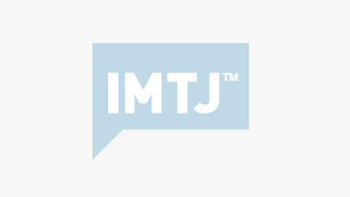Thailand must not overlook unexplored medical tourism potential in Eastern Europe, Central Asia and the Middle East, says the Tourism Authority of Thailand (TAT). Besides Russia, whose citizens have become big travellers to Thailand, Ukraine, Kazakhstan and Uzbekistan are the three rising stars listed by TAT. These countries could help to offset declining tourism from Europeans states beset by slowing economies. Medical and wellness tourism is mirroring mainstream tourism in where customers come from.
Thailand has been successful in attracting tourists from Russia in recent years, with the number of tourist arrivals from that country rising by 24% to 1.31 million in 2012.
In the Middle East, TAT is looking for new markets in Gulf countries as traditional channels such as Dubai and the wider UAE have become saturated. TAT sees potential in Oman, Qatar, Saudi Arabia and Jordan. TAT also plans to boost the number of visitors from Lebanon and Egypt, where Thailand’s tourism image is positive.
Thai medical tourism is largely ignored by tour operators, leaving hospitals to sell their products direct to consumers or use non-travel related representatives to drum up business. That is the conclusion of Naowarat Namitan from Bangkok International Hospital, who says that the hospital wants to tap business from Myanmar, Vietnam, and Cambodia, but travel agents are slow off the mark, ”Although we sell our medical services in neighbouring countries tour operators in those countries are not really interested, or lack the knowledge to create packages involving medical visits. The Middle East and Australia are the strongest markets for our medical tourism.”
Thailand’s medical, health and wellness tourism industry expects a further boost of business as the Asean Economic Community rules begin in 2015, but expects stiff competition from Malaysia, Singapore and Indonesia, especially for Muslim tourists.
Nithiwat Gijsriurai of Bangkok Hospital says they are aiming for more patients from Asean countries in two years’ time, “Last year, we treated 812,447 patients of which 130,335 come from overseas, including Gulf states Qatar, United Arab Emirates, Kuwait, Oman, Saudi Arabia and Bahrain. We have Thai doctors who can speak Arabic as well as Arabic translators and an Arabic wing in the hospital. Malaysia is also a choice destination for overseas Muslims. ”
To ensure they continue to be a leading destination, Thailand has increased the length of automatic visa extensions from 30 to 90 days for all Gulf state nationals- and this will be extended to all Asean members by 2014.Thailand intends to enlarge its customer pool by training or recruiting Arabic-speaking doctors, nurses and translators.
The Asean Economic Community (AEC) will create a single market for Southeast Asia with 600 million people, working on a similar basis to the European Union.
The ASEAN member states are;
• Brunei Darussalam
• Cambodia
• Indonesia
• Lao
• Malaysia
• Myanmar
• Philippines
• Singapore
• Thailand
• Viet Nam
The Thai government has a strategy for now until 2016 to promote medical tourism by emphasising the nation’s excellent service in general medical treatment, health promotion, traditional Thai medicine and alternative medicine. Bangkok is promoted as the spa capital of Asia, and efforts are being made to make other major tourism destinations recognised on the same level, including Chiang Mai, Phuket and Samui.
A recent survey of 22 medical travel agents from the United States, Australia, the Middle East and Europe found that foreigners have a positive impression of Thailand’s medical tourism industry.
According to Tourism Authority of Thailand (TAT) and the Ministry of Public Health, Thailand’s medical tourism statistics show that in 2012 foreign visitors sought Thai medical services on more than two million trips. But this does not mean 2 million medical tourists as it counts each visit to a hospital as a trip.
Official estimates recorded 58 billion baht revenue for Thailand in 2009, 65 billion baht in 2010, 97.8 billion in 2011 and 121.6 billion in 2012.








 ©2024 All rights reserved LaingBuisson
©2024 All rights reserved LaingBuisson 


